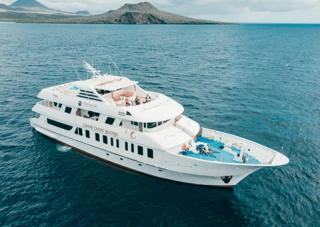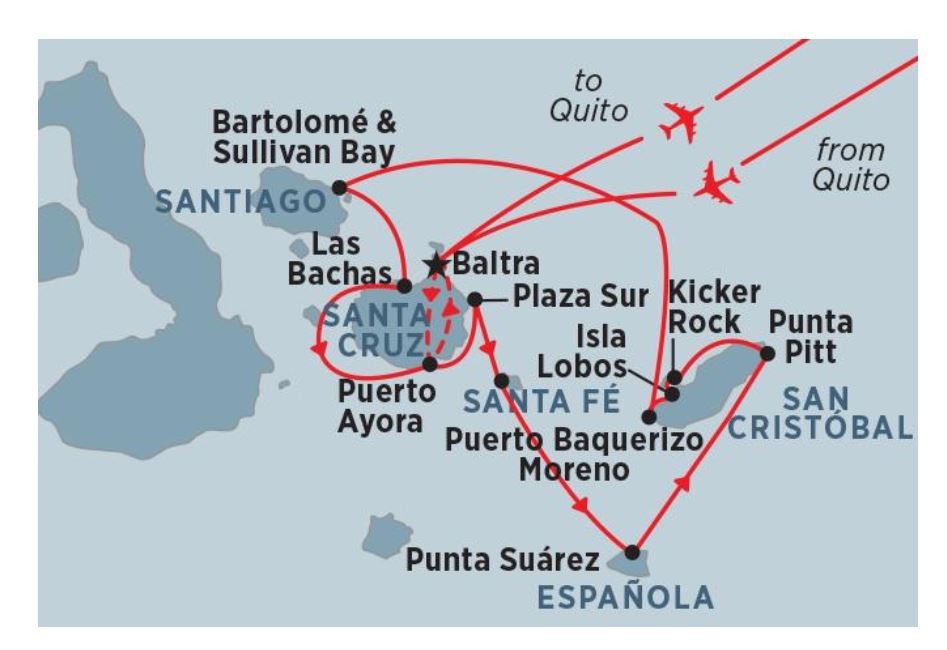
Explore the unique Galapagos ecosystem on this fascinating 10-day adventure
The Galapagos Islands was home to Lonesome George, the only surviving giant Pinta tortoise. Unfortunately George, the rarest creature in the world, died in June 2012. Though there are no more Pintas, Galapagos giant tortoises can be found all over the islands.
Is this trip right for you?
Although we don't ask travellers to complete a Physical Participation Form for this trip, we do ask that you read through the trip notes carefully to ensure that this trip is right for you. You’ll need to feel comfortable with the included activities and with moving about the boat. The cabins and communal areas of the boat are spread over four decks, and the steps between the decks are steep.
You will be entering and exiting a Zodiac boat (panga) during wet and dry landings and when returning from snorkelling. Although the waters we sail are usually calm, there are times when the sea can get rough and choppy. Steady sea legs (and a sturdy stomach) are needed when walking around the boat during bad weather. Rain or shine, your trusty crew will always be on hand to assist you.
A typical yacht/boat for sixteen travellers is equipped with eight cabins each with ensuites. They are designed to maximise living area space, so sleeping quarters can be a bit cramped. That being said, the adventure and exhilaration of an authentic Galapagos trip more than makes up for any discomfort.
While at sea and when exploring the islands, you may be exposed to the sun for large parts of the day. It’s important to use sun protection and drink plenty of water.
Please note that while there is an itinerary in place, some changes may occur due to the weather or because of direction from the local authorities. This can happen with little notice so please be prepared for potential modifications to the route or activities. A sense of humour and flexibility will ensure you have a fun, relaxing trip through this beautiful part of the world no matter what happens.
All of our Galapagos tours begin and end in Quito which is located approximately 2850 metres above sea level so you may experience some altitude sickness.
- As you board your vessel, M.Y Grand Queen Beatriz, and follow in the footsteps of Charles Darwin, you will encounter nature at its finest.
- Explore the islands from on deck, on foot and in the water, no doubt with your eyes open for your next unique sight.
- You'll encounter giant Galapagos tortoises, blue-footed and masked boobies, pelicans and frigate birds, as well as land and marine iguanas, sea lions, fur seals and perhaps dolphins, whales and sea turtles.
There are no future departures for this trip at this stage.
Grand Queen Beatriz

Vessel Type: Yacht
Length: 30.20 metres
Passenger Capacity: 16
Built: 2018
Welcome aboard our Queen Bea!
Experience the ‘Enchanted Islands’ in our new custom-built yacht, the Grand Queen Beatriz. Custom built, with a stylish modern design, ensuite bathrooms, outward-facing windows in all cabins (and private balconies in some), and a jacuzzi on the sundeck, the ‘Grand Queen Bea’ will be one of the newest boats operating in the Galapagos.
Facilities - All meals while on board, Sun deck and spa, Indoor and outdoor bar, TV/Lounge, Onboard gift shop
Equipment - Snorkelling equipment, Wetsuits, Beach towels
Accessibility - Stairs connect each deck, there is no elevator


